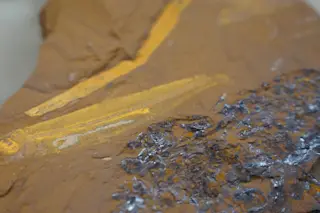A team digging up Qingjiang Fossils along the Danshui River, in Hubei Province, China. (Credit: Dong King Fu) (Inside Science) -- A new trove of outstandingly preserved fossils in China from the dawn of animal life rivals the horde of weird creatures found in legendary sites such as the Burgess Shale, and may shed light on many puzzles concerning the animal family tree, a new study finds. The earliest hints of life in the roughly 4.5 billion-year history of Earth may have appeared 3.95 billion years ago, but for a long time after that, life consisted of relatively simple organisms. However, about 540 million years ago, early in the Cambrian period, the simple animal life that already existed exploded in complexity and diversity. During this outburst, known as the Cambrian explosion, all the major groups of animals seemed to appear rapidly. Much of what scientists know about the Cambrian explosion ...
Fossil Bonanza in China Reveals Secrets from the Dawn of Animal Life
Discover the extraordinary Qingjiang Fossils, revealing secrets of early animal life and reshaping our understanding of the animal family tree.
More on Discover
Stay Curious
SubscribeTo The Magazine
Save up to 40% off the cover price when you subscribe to Discover magazine.
Subscribe













